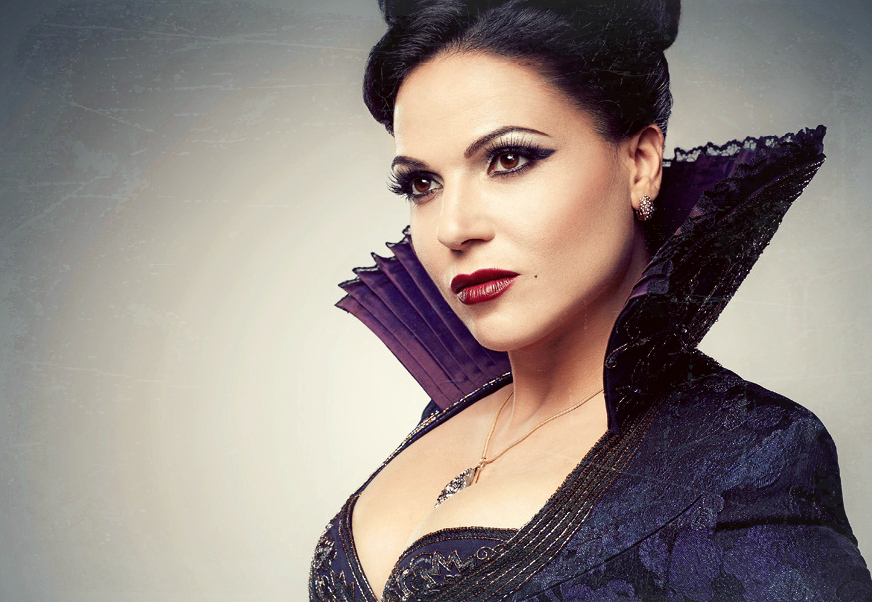Despite how deeply I enjoyed The Legend of Korra from its very first episode, shipping was never a priority for me as part of the fandom. Part of that was because I absolutely hated Book One’s main pairing with Korra and Mako; part of it was because I was too busy appreciating the intensity of the brand-new Avatar, who I liked quite a lot more than her predecessor. But everything changed when —
Just kidding. But my attitude definitely changed during the final two seasons of the show, which streamed on Nickelodeon’s website. Most of it came from the ramped-up action and storytelling in Book Three; I was happy to see the forced “love story” in Book One and the pointless love triangle in Book Two disappear.
Most of all, I was happy to see that despite the potential fallout that could have resulted from the lead female fighting over a boy with another female character, none of what I feared actually came to pass. While Korra definitely seemed to be firmly in the Not Like Other Girls camp — Book One appeared to show her blatant jealousy of Asami’s glamorous appearance — Book Three took her out of it as she avoided a lot of the toxic pitfalls of that trope. She remained close to Asami after both of them (finally) broke things off with Mako, and their friendship actually became much stronger in Book Three.
That’s when the first stirrings of shipping began in my heart.
I’ll be honest, though: I didn’t want to seriously ship anything in The Legend of Korra. I’d been burned by Byrke before in The Last Airbender — friendly reminder that Zutara was my number-one Non-Canon Couple in last year’s feature — and I didn’t want to get burned again.
As the series progressed, though, and as Korra and Asami’s friendship became stronger and a more prevalent part of the show, I couldn’t help hoping the two could be happy together. As a pair of people, they had good balance: Korra was impulsive and strong, a strong fighter who sometimes let her emotions get the best of her, while Asami was collected and thoughtful, a modern woman in a time of change. And despite their differences, they could still be friends, and they could have a friendship stronger than Korra’s with the boys.
Despite the number of excellent female characters in The Last Airbender, showing a strong friendship between Korra and Asami was itself remarkable. The Last Airbender was about Aang’s personal journey; Korra’s journey has, from the start, been so much more about her relationships with those around her — with her teacher Tenzin, with her teammates Mako and Bolin, and even the relationships she had with each season’s Big Bad. The Last Airbender had female friendships, yeah, but nothing like the relationship between Korra and Asami.
As Book Four aired — and as my Korrasami-ship-captaining friend pointed out every tiny moment between the two — the possibility that the ship would be endgame grew stronger, and I found myself hoping against all odds for the best.
And when Bryke confirmed that yes, the series finale ended exactly how you thought it ended, something very interesting rippled through the internet and media. Vanity Fair called The Legend of Korra “One of the Most Powerful, Subversive Shows of 2014.” i09 named Korrasami one of “The Greatest Breakout Stars of 2014.” And as Joel mentioned in his own article, Bryke also pointed out that while they couldn’t show the couple kissing, there were other ways the couple could be depicted finding happiness together.
While it was really Korrasami that made headlines, what makes the series so remarkable is how it presents girls and women and the relationships they can share. Korra is the most powerful bender in the world; Asami, who often gets noticed because she’s so beautiful, is a genius engineer and businesswoman. Each has her own layers and her own flaws, and despite their competition at the start of the series, their friendship survived, and their relationship only grew more layered over time.
In Vanity Fair‘s article, Joanna Robinson summed up their growth succinctly:
But over the seasons, a true friendship blossomed between the two characters. And though Konietzko and DiMartino will almost certainly be accused of fan service for pairing Korra off with Asami (their passionate devotees call them Korrasami), you can’t say you didn’t see this coming. The bond between the two women, which overwhelmed their previous attachment to Mako, has been seeded for seasons now.
The strength of Korrasami, then, wasn’t just that an animated show for a younger audience depicted a same-sex couple in its finale. Its strength came from the development of their relationship over time, a more complex and developed relationship than can be seen in many shows.
The critical reception of the show’s ending has been strong not just because of its representation of LGBT couples, but the nuanced development of the relationships in the series as a whole. Animators, filmmakers, and authors can take note: it’s not the ending of the series that made Korra and Korrasami so strong — it was their growth together that made fans fall in love with their love.
—
Feliza Casano still isn’t sick of the screencap at the top of this article. She writes for all sections of Girls in Capes, and she’s the one behind GiC’s Facebook and Twitter. Follow her on Twitter @FelizaCasano.
Don’t miss the rest of The Shipping Issue!






